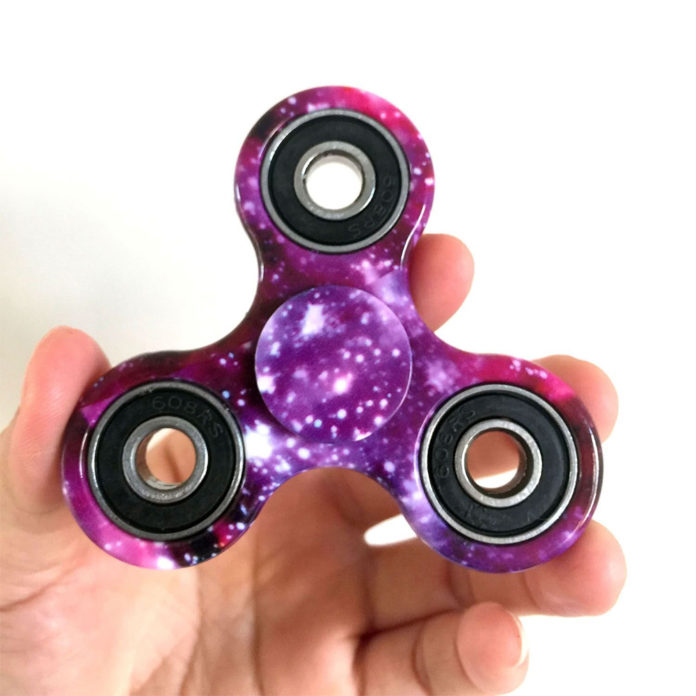
There have been many dialogues via social media, radio, TV, as well as open debates regarding Fidget Spinners. Some of you may have already bought your child five of them, whilst, some of you despise them all together. Others may not even know what am even talking about. Do not worry, this post is for you then!
What is a Fidget Spinner?
According to Wikipedia :
A fidget spinner is a type of toy, whose marketers claim it relieves stress. A basic fidget spinner consists of a bearing in the center of a design made from any of a variety of materials including brass, stainless steel, titanium, copper and plastic. The toy has been advertised as helping people who have trouble with focusing or fidgeting (such as those with ADHD, autism, or anxiety) by acting as a release mechanism for nervous energy or psychological stress. Experts were divided on this claim, with some supporting it while others disputed its scientific basis and argued the toy may actually be more distracting.
Pros & cons of a Fidget Spinner
Initially the Fidget Spinner was created as a means of helping people who struggled with psychological stress. The idea was to help empower children who had ADHD, Autism, and Anxiety as a means of keeping them calm and focused. However, now every child has one and takes it to school. In some ways it has become another collectible toy, and a bit of a distraction within the classroom.
Before forming an uninformed opinion on the Fidget Spinner, I decided to test it out. First a little disclaimer: I am a drama teacher – so I understand how something like this can either help or distract within the classroom. Secondly, I have to constantly work at overcoming my anxiety in the day-to-day. Therefore, I wanted to test the Fidget Spinner to see if it would really aid in calming me.
The Fidget Spinner test
Upon first glance, it looks rather small, very plain, and well it spins, it doesn’t seem very exciting upon first glance. I then started playing around with it, spinning it, watching it, and I became rather mesmerized – I won’t lie! When I have to work through my anxiety, I normally try to sift through a million anxious thoughts, my mind feels scattered, and all over the place most of the time. Which in turn causes me to breathe rapidly, and it makes me feel emotionally overwhelmed.
However, when I focused on just spinning this little object, all I did was focus on it. It’s almost as if my mind with all of its million thoughts became still as I focused on spinning the fidget spinner. After doing it on and off for the last week – I noticed that I felt a bit calmer, because I wasn’t living so much inside my head. Which in turn made me feel a bit more grounded, and rested in some ways. For me personally, I can see why something like this works for those who struggle with anxiety.
Fidget Spinners in the classroom
Some schools have banned the idea of Fidget Spinners all together, whilst, others are looking for ways in which to incorporate it within the lessons. I have seen some learners take out their fidget spinners when they are busy writing scripts, and it helps them to stay focused whilst creating storylines. Then, on the other hand I have seen children with ten fidget spinners getting so caught up in playing with them that it actually serves them a disservice and causes them to be distracted and to not finish their work. It has its pros and it has its cons for sure.
I recently heard of school that decided to stop banning and confiscating the spinners, and instead let the children spin their spinners for an allocated time throughout the day, whilst working on certain activities. This school felt that: A) They were still being relevant to what the children’s interests were, B) They were finding a way to use the spinners wisely within lessons, as a means of encouraging interactive education with the children. For them, they believe that they are seeing positive results.
In one way fidget spinners can be an empowering learning tool, whilst for some it may be a distraction. What are your views and opinions on Fidget Spinners?
